Comment: Please note that due to the age of the article many of the videos originally linked to are now missing from the web.
There are many conventional theories that seek to explain the development of a tornado. Without exception they cannot explain the complex internal structure and energy flows in a simple and logical manner.
Tornados show a remarkably complex coherent structure, and the existence of rope like tornadoes, tornadoes that kink and reform, and the nature of the ejection zone at the tornado base all require, and can be simply explained if air with or without particles can be shown to exist in a form that has both shear and tensile strength.
The charged sheath vortex theory can explain the formation of the tornado in a very simple and elegant way. It predicts the complex physical structure and electrical properties of the tornado. It explains the simple basis for many tornado 'anomalies' and also makes predictions about the structure of the tornado that may not yet have been observed.
A vortex is produced by a spinning mass of air (or other gas or dust cloud), but there are two different types of vortex in the air circulation that we call a tornado with very distinct properties.
The Turbulence or Shear Vortex
The simplest is the turbulence vortex, or shear vortex. This is often seen in a dust devil, where an air current flowing over a hot ground surface, rises. As the air rises it starts to rotate, drawing air and dust in at ground level and carrying it upwards through the rotating column to discharge at the top. But note that a dust devil may rapidly become charged and turn into a charged sheath vortex.
The shear vortex can also be seen at the tip of aircraft wings, particularly in conditions of high relative humidity, where the vortex becomes visible as moisture condenses in the lower pressure inside the vortex. These vortices can persist for several minutes, and the large vortices produced by very heavy aircraft can flip a light aircraft following behind. On rare occasions a wingtip turbulence vortex will also become charged and turn into a charged sheath vortex that will rip any following aircraft apart, however strongly built they are.
Turbulence vortices are easy to produce by creating angled air currents and an updraft. Demonstrations of 'tornados' are all turbulence vortices. For one of the best see the experimental setup that created a turbulence dust devil for a commercial at: http://www.reelefx.com/Tornado/40footVolvo.htm
Air can blow against an object and move and lift dust and light objects, but has very little shear strength and so cannot transmit energy through a column of air.
The shear vortex has ragged and turbulent edges, and the centre of the vortex is also ragged in appearance.
The Charged Sheath Vortex
The charge sheath vortex develops within a large charge cloud where the repulsion between the charges is canceled out,
1 ) Two stationary particles carrying the same electrical charge will repel each other, but within an electric field they will form dipoles that will experience an attractive force.
2 ) In a large charge cloud where the repulsion between the charges is the same in all directions, this force will cancel out
3 ) Two streams of dipoles with the same field charge moving in parallel in a large charge cloud will also develop a force of attraction through their electromagnetic interaction.
The charged sheath vortex is a fast spinning tube of electrically charged air and/or dust molecules.
The high velocity of the particles, all with the same net charge charge, and all rotating in the same direction, creates very large electrodynamic forces (Very similar to an electrical solenoid that produces a powerful electromagnet)
By a quirk of history, diagrams of electrical current show the arrow for current direction for the movement of positive charge. This makes no difference for the charge sheath, but can be a little confusing for students of electricity at first.
The arrow on field lines is shown pointing to the south magnetic pole. The direction shown by a compass.
The north pole on a magnetic compass points to a south magnetic pole. (At the geographic north pole!)
The following images come from the hyperphysics site.
or see the book (Foundations of Electromagnetic Theory, R. Milford)
This shows the magnetic field produced by a positive charge particle moving. Note the way the thumb placed in the direction of movement and the fingers showing the magnetic field.
A
If several charged particles move in parallel, the magnetic forces between them draw them together.
We know from Z pinch experiments that the electromagnetic forces that draw the particles together is greater than the electrostatic charge that pushes them apart.
B
When a moving charge passes through a magnetic field it experiences a force which is perpendicular to both the magnetic field and the velocity. (Shown by the red dotted line in the following diagram.) As the particle responds to the force, by moving upwards, the force continues to act perpendicular to the new path, and so the particle will be forced into a circular path if it remains within the magnetic field..
C
But the moving charge particle also produces a magnetic field. Note that the direction of the magnetic field produced by the charge particle (arrows point to the south pole) is the opposite direction in relation to the circular path of the charged particle as in the diagram above. The charge particles are therefore canceling the magnetic field which caused the charge particle to follow a circular path.
D
Consider the case where within a large charge cloud where the repulsion between the charges is canceled out a stream of positive particles forms a loop in the absence of an externally applied magnetic field. There is a powerful force of attraction between the particles moving in parallel as in B above.
If a charged particle strays inwards into the inner field, the magnetic force on the charged particle will subject the particle to a force that pushes it back out into the sheath as discussed in C and D above. If the charged particle strays outwards into a region where the field is in the opposite direction, the force it is subject to will push it back into the sheath.
1 ) Two stationary particles carrying the same electrical charge will repel each other, but within an electric field they will form dipoles that will experience an attractive force.
2 ) In a large charge cloud where the repulsion between the charges is the same in all directions, this force will cancel out
3 ) Two streams of dipoles with the same field charge moving in parallel in a large charge cloud will also develop a force of attraction through their electromagnetic interaction.
E
Within a large charge cloud where the repulsion between the charges is canceled out, the flow is held as a coherent stream by the attraction between forces moving in parallel. Any instability in velocity will cause greater magnetic fields in the faster region than the slower regions.
The faster region with the greater magnetic field will be pinched more, speeding up the flow, which increases the pinch and so on becoming longer and thinner. But the extension in length cannot be accommodated in a straight line. It can only force the stream to form a loop.
Within a large charge cloud where the repulsion between the charges is canceled out, the vortex sheath is compressed between the powerful inward and outward forces, accelerating and generating yet more powerful forces. Since the outer force pushing inwards always remains the stronger, the vortex will compress and narrow - until the forces generated by the opposing sheath wall spinning in the opposite direction prevent further compression.
The force needed to turn the particles into the curve will also increase as the velocity increases and radius of curvature increases and will put a limit on the minimum radius the vortex can achieve.
Within the centre of the charged sheath vortex the fields reinforce each other to produce a powerful solenoidal field.
These forces very powerfully keep the particles from flying outwards away from the tube, but also prevent the tube collapsing inwards. If new rotating charged material is constantly being added then this will also push the ends of the tube away from the middle. The result of this balance of very powerful forces is a tube that must stay almost circular, with a clear central tube. Because all the particles are held very firmly in place the sheath can transmit large amounts of energy from one end to the other.
The charged sheath vortex is the mechanism capable of transmitting the energy of a tornado from the clouds to the ground.
The centre of this tube may become visible as moisture condenses in the lower pressure, and sometimes it will contain dust or water from the ground surface.
Energy from the Storm
Occasionally in normal thunder clouds, and much more frequently in the supercells in tornado alley, the airflow imparts a circular rotation to a large volume of thundercloud. This can arise as a single pronounced curl to the storm, or shear between violently opposed air flow can create a whole series of vortices all rotating in the same direction.
At the same time in the thunder clouds, charge becomes separated. The base of the cloud is usually negatively charged and the tops positively charged.
An electrical field strength of 10000 N/C is typical for this charge cloud.
The charged, rotating cloud mass may have a volume of several cubic kilometers. It has a huge kinetic energy resulting from its rotation, and it is this kinetic energy that is transferred to the tornado.
See the movie from http://www.iphc.org/drusa/tornado/vidclip2.html Rotating storm that produced a tornado.
1 ) Two stationary particles carrying the same electrical charge will repel each other, but within an electric field they will form dipoles that will experience an attractive force.
2 ) In a large charge cloud where the repulsion between the charges is the same in all directions, this force will cancel out
3 ) Two streams of dipoles with the same field charge moving in parallel in a large charge cloud will also develop a force of attraction through their electromagnetic interaction.
If the charge is sufficiently entrained in the air, the dipole particles cannot simply be pushed through the air mass.
If the net charge on the dipoles is sufficiently high, then the repulsion will try and cause the air mass to expand. This expansion will be opposed by the air pressure of the surrounding air. This would result in the storm cloud having a slightly lower density than the surrounding air. If the net charge on the dipoles is slightly lower, the least energy configuration is where the positive charge on one dipole lines up with the negative charge on the nearest dipoles. This produces a force of attraction between the dipoles.
We can represent this equilibrium as: static field = (expanded charge repulsion field) = (charge repulsion of field) + (air pressure)
Now consider that the cloud is rotating. As we have agreed before, this will produce a slight force of attraction between the paths of the moving dipoles through interaction of their magnetic fields.
The moving charges will move (slightly) closer together until the (attraction through magnetic field) + (static field) = (static field) + (charge repulsion through closer proximity).
However slight, our stream of charged particles is now moving faster, and through conservation of angular momentum, will cause the storm to rotate with a narrower radius.
Our faster stream of particles now produces a (slightly) larger magnetic field, so again it will accelerate and charge carriers will move closer together, increasing the field strength until (magnetic field) = (charge repulsion).
However as the rotation of the storm increases, a new factor comes into play. The faster air flow of the rotation stream results in a lower effective air pressure.
This permits further movement of the charge carriers into the faster flowing region, and a higher field strength
The new equilibrium is now: (magnetic field) = (charge repulsion) + (external air pressure) - (internal pressure of rotating air).
Each iteration of the equation results in a faster, thinner vortex tube.
Collisions between particles and the electromagnetic force generated by the overall mass of moving dipoles will cause some charge particles to be transferred - with a net flow inward. The magnetic fields will thus result in the development of an electric field, with the highest charge in the central region of the vortex tube. This electric field ensures that the dipoles in the rotating airstream remain orientated as dipoles, with the opposite charge to the central core facing inwards.
As the charged particles in the cloud rotate, the electrodynamic forces their movement creates draw them together and inwards. Because the energy must stay constant, particles moving in a smaller circle must move faster - in order to conserve angular momentum they must speed up. Think of the ice skater spinning, speeding up as she draws in her arms to her body.
The forces of attraction between the particles must increase as they speed up and the forces between the charged particles increase dramatically as the distances get smaller.
This makes the electrodynamic forces stronger still, so the process of moving inwards and spinning faster continues until a charged sheath vortex is being produced at the centre of the rotating storm.
The sheath is a shell of dipole particles entraining the air. It displays a gradient of charge from the highest charge in the centre to the lowest charge on its outer surface. It is a combination of the hydrodynamic pressures, electromagnetic fields and electric fields on the dipoles and air.
If the circulation is disrupted by a kink, the region away from the driving force of the storm cloud flies apart - demonstrating that this is not simply a falling vortex of air.
The forces created by an electrical current in a wire are produced in proportion to the speed of electrons through a wire. Because of collisions and random movements of electrons in the wire, the overall speed of the electrons, or drift speed is quite slow. (but the density is high). A 1 volt potential in a pure copper wire will produce a drift speed of 0.0043m/s This is less than half a centimetre in a second.
By contrast air flow in a tornado can exceed 1000 m/s. This is not the true speed of the electrons, which are still moving very much faster, but repeated colliding within the dipole particle.
The forces between moving electrons in a mass flow may be thousands of times greater than the forces between electrons in a wire.
If these electrodynamic forces were not present the maximum voltage gradient in air is about 3*10^6 volts / m before an electrical discharge takes place. Measurements of higher charge gradients in the sheath of dust devils demonstrates very clearly the charge sheath at work.
Pressure from new charged dipole particles joining the sheath now forces the ends of the tube outwards, up into the cloud, and down towards the opposite charge on the ground.
In a small tornado only the charged vortex sheath approaches the ground, and this may not be visible until dust starts to outline it. A large tornado may show a large inverted cone as the pressure of the electrodynamic forces creates downward pressure on the cloud base well outside the charged vortex sheath. This maintains the charge cloud external to the charge sheath, so that the electrostatic repulsion does not come to predominate.
As the charge sheath is pushed down below the charge cloud of the thunderstorm it will start to attract an external sheath of charged particles with the opposite charge. This external sheath is not rotating and so does not cancel the electromagnetic fields produced by the charge sheath, but does balance the electrostatic charge. Charge is continually being pushed down this charge sheath and being neutralised by external charge, but because of the excellent insulating properties of air, this neutralisation process is slow relative to the movement of charge within the tornado.
Occasionaly a tornado tube is seen to fly apart. This would suggests a point where neutralisation of the sheath has taken place, or where electrostatic repulsion is now greater than electromagnetic attraction.
Touch down
Large dust and debris clouds often obscure the processes at work at the ground.
The charged vortex sheath bites into the ground rather like a hole cutter. A tubular narrow blade rotating at high speed moving over the ground surface. The external charge cloud which maintains the balance of forces between the sheath and the external medium is not shown on these diagrams.
Because it has a high electrical charge, it induces the opposite charge onto everything near it. The attractive forces are huge and together with the abrasion of particles rotating in the sheath it rips the surface from anything it touches. As these ripped off particles start to speed up the electrodynamic force come into play and the particles that were violently attracted are now violently ejected.
See the movie from http://redrock.ncsa.uiuc.edu/~jewett/Obs/May1598.html This is an Overview This is a good sequence starting with charged sheath vortex touching down, clearly visible as a thin tube. An ejection cloud starts to build up and an outer turbulence vortex starts to form, but is then blown away - ahead of the vortex - by the surface wind. The outer turbulence vortex then reforms, and by the time it crosses the road is extremely well defined. At around 16 seconds part of the turbulence vortex is again breaking up in a large curl, again blown out by a wind moving faster than the vortex is traveling.
Ejection Zone
If you watch a small tornado closely you can see these forces at work. Watch how the opposite charged dust from the ground is thrown out at high speed and then seems to drift downward again. This shows very clearly that at this stage there is almost no airflow coming down the tornado or going up the tornado. See the movie from >http://www.uni-stuttgart.de/Wetter/specials/movies/tornado2.mpg Look at the time between 00.03 to 00.06 A small tubular charged sheath vortex is visible inside the larger turbulence vortex.
Charge Particle Expansion creates a Turbulence Vortex
As the ejected charged dust cloud increases, the charge between the dust and the charged air molecules create a pressure that forces the particles apart and reduces the density. This charge induced reduction in density makes the ejection cloud lighter than the surrounding air so it starts to rise.
As this dust cloud rises it draws air in from round the base of the tornado, and this rising air may also start to rotate, but at a much slower rate than the charged sheath vortex spinning at high speed inside it.
The result is a turbulence vortex of dust and air rising, surrounding the charged sheath vortex of the tornado at its centre.
The Anatomy of a Large Tornado
When we watch a large tornado, what we see is the rising turbulence vortex of dust and debris, but at its core it is powered by a charged sheath vortex of extreme ferocity and strength. From http://www.kwtv.com/wx/wxcenter.htm is tornado2.mov(389K) A or tornado2.mov from cache A huge tornado, but most of what we can see are hanging plumes of ejected material, in a gently rising and gently rotating air stream. The violence of the charged sheath at the core is not visible.
When we examine the debris field after the tornado has passed, the broadest part is a band of destruction caused by the inflowing winds of the turbulence vortex, but at the core is a narrow band that has felt the teeth of the charged sheath itself and the ground surface shows the striations as the surface was pulled apart. Small debris such as straw can become entrained in the charged sheath and then behaves as though it was part of a rigid solid, driving the debris through wood or steel. The charged sheath can also rip and twist metal structures under the ground surface protected from any wind, but fully exposed to the violent magnetic fields at the end of the vortex tube.
All the points made can be demonstrated by clips from video of real storms. Many of these are available on the Internet.
From http://www.iphc.org/drusa/tornado/vidclip2.html Rotating storm that produced a tornado.
http://www.uni-stuttgart.de/Wetter/specials/movies/tornado1.mpg Or tornado1.mpg from cache Outer turbulence vortex shows visibility due to condensation of water vapour through expansion rather than dust. A tangential air inflow is lifting surface dust. Notice that this air inflow rises before reaching the core of the vortex. It does not form part of the core.
http://www.uni-stuttgart.de/Wetter/specials/movies/tornado2.mpg Or from cache time 00.03 to 00.06 small tubular charged sheath vortex is visible inside the larger turbulence vortex
aircirc.mov Good rotation of cloud, three examples:
From http://www.kwtv.com/wx/wxcenter.htm is tornado1.mov(857K) Or from cache This is particularly kink tornado interesting. Not only can we see the charged sheath vortex within the turbulence vortex, but the charged vortex sheath appears to kink and then violently fly apart at 05 to 06. The kink demonstrates that there is no major vertical airflow within the charged sheath vortex.
From http://www.kwtv.com/wx/wxcenter.htm is tornado2.mov(389K) Or from cache A huge tornado, but most of what we can see are hanging plumes of ejected material, in a gently rising and gently rotating air stream. The violence of the charged sheath at the core is not visible.
From http://www.kwtv.com/wx/wxcenter.htm is tornado3.mov(933K) Or from cache Another very large tornado with a rising and rotating turbulence vortex. The turbulent nature of the flow is clearly visible in this example. Notice the secondary eddies to the left around 10-11
From http://redrock.ncsa.uiuc.edu/~jewett/Obs/May1598.html is Overview Or from cache This is a good sequence starting with charged sheath vortex touching down, clearly visible as a thin tube. An ejection cloud starts to build up and an outer turbulence vortex starts to form, but is then blown away - ahead of the vortex - by the surface wind. The outer turbulence vortex then reforms, and by the time it crosses the road is extremely well defined. At around 16 seconds part of the turbulence vortex is again breaking up in a large curl, again blown out by a wind moving faster than the vortex is traveling
http://redrock.ncsa.uiuc.edu/~jewett/Obs/May1598/tornadoSW.mpg Or from cache Is taken from the same original video as above, but shows more detail, up to just before it crosses the road.
http://redrock.ncsa.uiuc.edu/~jewett/Obs/May1598/tornadoW.mpg Or from cache Next part of sequence, crossing the road
http://redrock.ncsa.uiuc.edu/~jewett/Obs/May1598/tornadoNW.mpg Or from cache Final part of sequence with the outer turbulence vortex losing its upwards momentum.
http://www.iphc.org/drusa/tornado/vidclip5.html One of a sequence of the same storm as the rotating storm clip. Notice the outer turbulence vortex is not showing much vertical movement, and no inflow visible at ground level, but notice large debris being ejected up and out and then falling down from the right.
http://www.iphc.org/drusa/tornado/vidclip6.html The same storm. Notice the rotation of the cloud base continues as a horizontal rotation without any vertical component
http://www.iphc.org/drusa/tornado/vidclip7.html A good view of the outer turbulence vortex. Notice that the rotation nearest the grounder is faster than the rotation above.
http://www.iphc.org/drusa/tornado/vidclip8.html Within the circulation of the turbulence vortex!
http://www.stormvideo.com/real/19.rm Shows a charged vortex sheath decaying from the ground upwards.
At the top of the tornado the vortex tube is pushed up above the storm. Here there is no debris to mark its rotation, but any charged particle within the vortex tube that is not rotating in the sheath will be violently repelled by the electrostatic charge of the sheath and ejected out through the ends of the vortex tube. These high energy particles will ionize the thin air in fountains above the tornado tube. These have been photographed from space and are known as sprites.
There is another natural phenomenon, described in numerous reports with a wealth of incidental detail, yet whose structure and development is still unexplained: Ball lightning
You are welcome to join the discussion, but please note that any claims you make for or against these theories should be backed by scientific reasoning that can be developed from first principles.
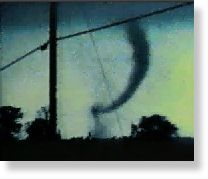
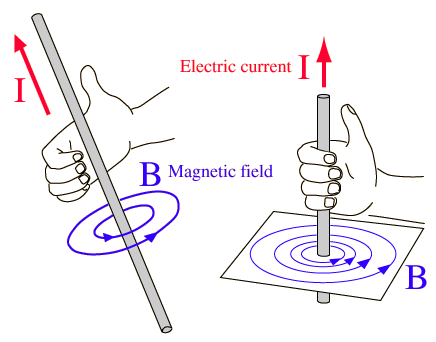
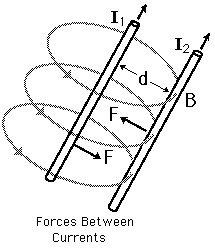
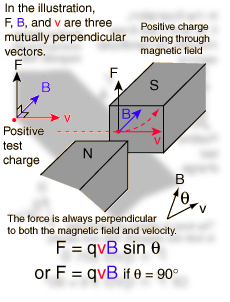
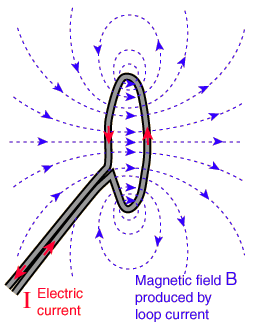
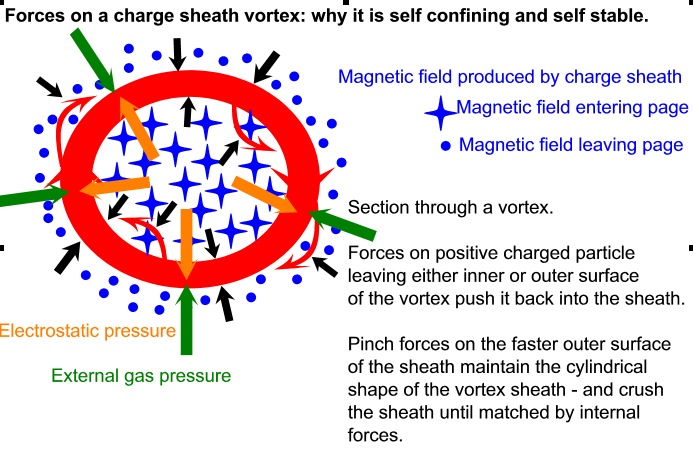
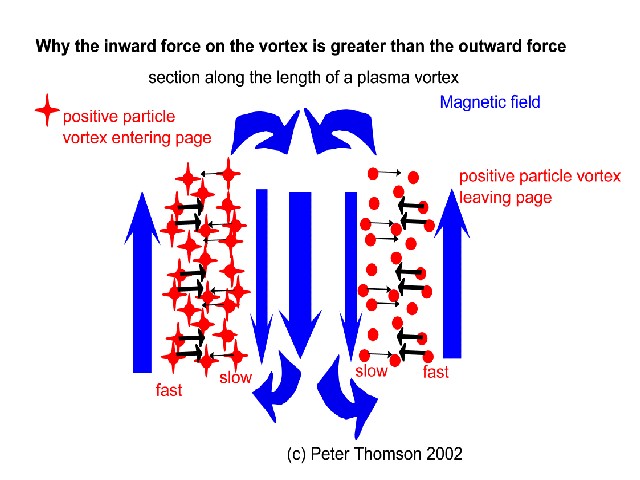
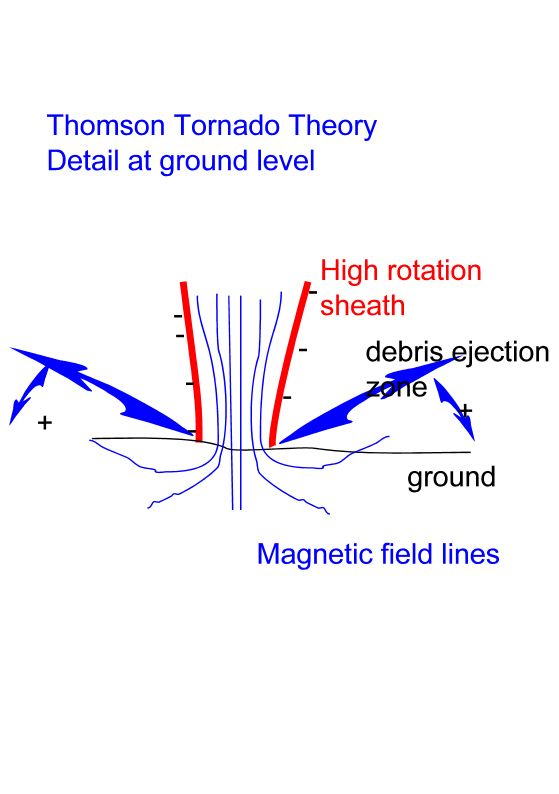
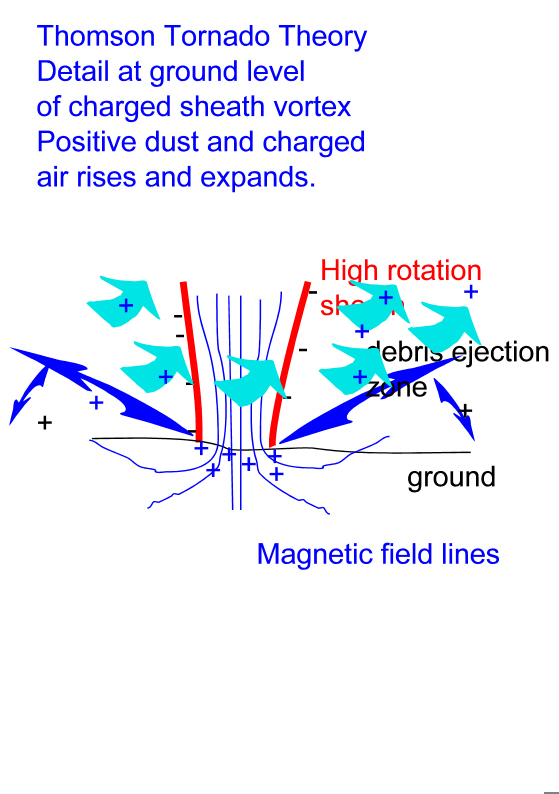
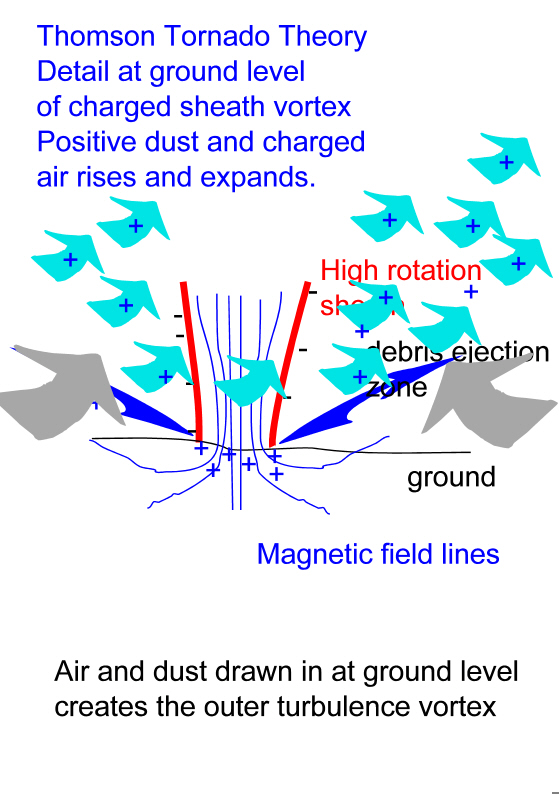
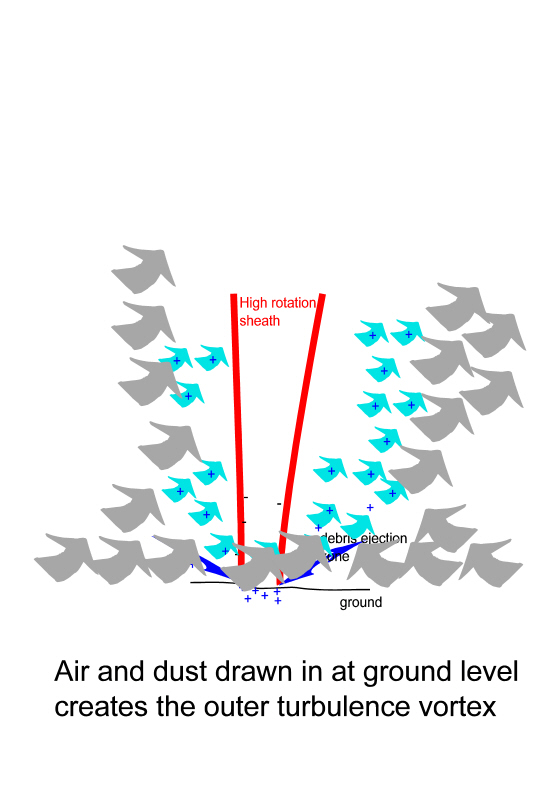
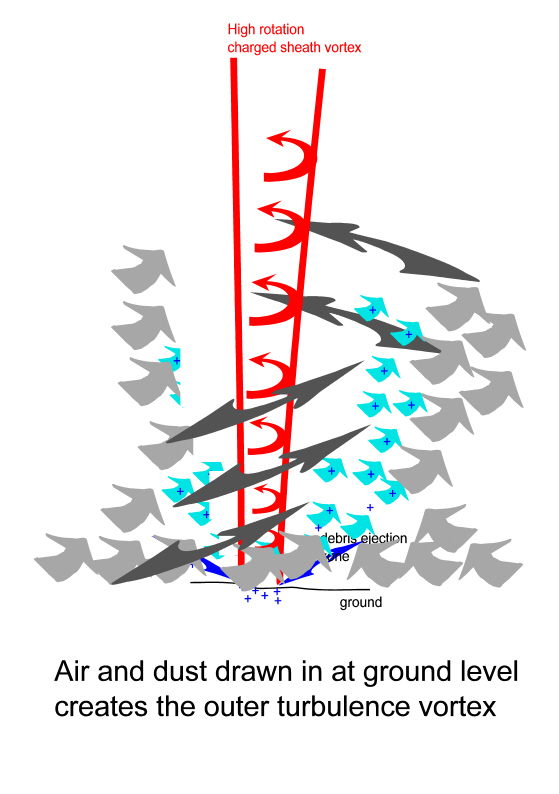



A big thank you to the SOTT team, for and pulling together this incredible research in a way that is easy, and straightforward to understand. This helps me greatly to understand the dynamics and reasons behind the incredible number of tornado's in the US and the driving energy behind them much clearer. As the Earth is being charged up more and more by the discharging of the solar capacitors electrical potential, so the electrical energy potential of the Earth is being discharged at an exponentially higher rate in the storm cells. This in turn means that the available electrical energy potential in those storm cells is much higher and forms more frequent and stronger electrical fields creating more of these electromagnetically attracted dipoles, which in turn begin to form the savage charged sheath vortexes as the motors to power the tornado's. This would also suggest that the more electrically charged the Earth becomes over the next couple of months/years, the more of these devastating and increasingly energetic charged sheath vortexes/tornado's we will see. An ominous thought and another dot well connected :o)